#Instructional design
Explore tagged Tumblr posts
Text
Transforming Learning with Gagné’s Blueprint for Microlearning Excellence
In the realm of educational psychology, Robert Gagné’s work stands out for its profound impact on instructional design. His "Nine Events of Instruction" provide a comprehensive framework for designing effective learning experiences. When combined with the microlearning approach, Gagné’s principles can revolutionize how organizations train and develop their workforce. This article explores Gagné’s instructional blueprint and its application in microlearning to achieve optimal learning outcomes.
Understanding Gagné’s Nine Events of Instruction
Gagné’s Nine Events of Instruction are a systematic approach to teaching that enhances the learning process. Each event addresses a specific aspect of learning, ensuring that learners are engaged, motivated, and able to retain and apply new knowledge. The nine events are:
Gain Attention: Capture the learner’s interest to prepare them for learning.
Inform Learners of Objectives: Clearly state what learners will achieve by the end of the instruction.
Stimulate Recall of Prior Learning: Help learners connect new information with what they already know.
Present the Content: Deliver the instructional material in an effective and engaging manner.
Provide Learning Guidance: Offer support and strategies to help learners understand and apply the content.
Elicit Performance (Practice): Give learners opportunities to practice what they’ve learned.
Provide Feedback: Offer constructive feedback to reinforce learning and correct mistakes.
Assess Performance: Evaluate learners’ understanding and proficiency.
Enhance Retention and Transfer: Help learners retain information and apply it in different contexts.
Integrating Gagné’s Principles with Microlearning
Microlearning, characterized by its short, focused learning modules, aligns well with Gagné’s events. Here’s how each of Gagné’s events can be effectively integrated into a microlearning framework:
Gain Attention:
Microlearning Application: Use engaging multimedia elements such as animations, videos, or provocative questions to capture learners’ attention quickly.
Example: Start a cybersecurity module with a short, dramatic video showcasing a real-life security breach to highlight the importance of the topic.
Inform Learners of Objectives:
Microlearning Application: Clearly state the learning objectives at the beginning of each microlearning module. This helps learners understand the purpose and expected outcomes.
Example: “By the end of this module, you will be able to identify and respond to phishing attempts.”
Stimulate Recall of Prior Learning:
Microlearning Application: Incorporate brief reviews or questions that prompt learners to recall relevant prior knowledge before introducing new content.
Example: Before introducing advanced sales techniques, ask learners to recall and list basic sales principles covered in previous modules.
Present the Content:
Microlearning Application: Deliver content in small, manageable chunks using various formats such as videos, infographics, and interactive slides to maintain engagement.
Example: A microlearning module on project management could include short videos explaining each phase of a project lifecycle, supplemented with infographics summarizing key points.
Provide Learning Guidance:
Microlearning Application: Offer tips, examples, and strategies within the module to help learners understand and apply the content.
Example: During a module on customer service, provide scenarios and suggested responses to common customer queries.
Elicit Performance (Practice):
Microlearning Application: Include interactive elements such as quizzes, simulations, and drag-and-drop activities that allow learners to practice new skills.
Example: In a module on data analysis, include a simulation where learners interpret data sets and make decisions based on their analysis.
Provide Feedback:
Microlearning Application: Offer immediate, specific feedback on practice activities to reinforce correct responses and guide learners in correcting mistakes.
Example: After a quiz on compliance regulations, provide explanations for each answer, highlighting why certain responses are correct or incorrect.
Assess Performance:
Microlearning Application: Use assessments such as quizzes, scenario-based questions, or mini-projects to evaluate learners’ understanding and proficiency.
Example: At the end of a module on financial literacy, include a quiz that tests learners’ ability to balance a budget or interpret financial statements.
Enhance Retention and Transfer:
Microlearning Application: Include activities and resources that encourage learners to apply what they’ve learned in real-world contexts. Follow-up modules and refresher activities can reinforce retention.
Example: After completing a module on leadership skills, encourage learners to implement a leadership strategy in their workplace and report back on their experiences in a follow-up discussion.
Benefits of Applying Gagné’s Blueprint to Microlearning
Enhanced Engagement: By capturing attention and clearly outlining objectives, learners are more motivated and focused. The varied presentation of content keeps the learning experience fresh and engaging.
Improved Retention: Gagné’s emphasis on recall, practice, and feedback helps reinforce learning and improve retention. Microlearning’s short modules also aid in better retention by preventing cognitive overload.
Immediate Application: Microlearning’s focus on practical application aligns with Gagné’s principles of practice and performance assessment, enabling learners to apply new skills and knowledge immediately.
Flexible and Accessible: The on-demand nature of microlearning allows learners to access content anytime, anywhere, fitting training into their busy schedules.
Continuous Improvement: Regular assessment and feedback ensure that learners continuously improve and refine their skills, leading to better overall performance and productivity.
Tips for Implementing Gagné’s Blueprint in Microlearning
Start with Clear Objectives: Ensure that each microlearning module has clearly defined objectives that align with Gagné’s framework. This provides direction and purpose for the learners.
Incorporate Diverse Media: Use a mix of videos, infographics, interactive quizzes, and simulations to present content engagingly and effectively.
Provide Immediate Feedback: Incorporate mechanisms for immediate feedback to help learners correct mistakes and reinforce learning in real-time.
Encourage Real-World Application: Design activities that encourage learners to apply their knowledge in practical, real-world scenarios to enhance retention and transfer.
Monitor and Iterate: Continuously monitor the effectiveness of the microlearning modules and make iterative improvements based on learner feedback and performance data.
Conclusion
Integrating Gagné’s Nine Events of Instruction with microlearning offers a powerful approach to designing effective and engaging training programs. By following Gagné’s blueprint, organizations can enhance the learning experience, improve knowledge retention, and ensure that learners can apply new skills in their work. This combination of structured instructional design and flexible, accessible learning modules sets the stage for microlearning success and drives organizational growth and development.
#Gagné’s Nine Events of Instruction#Microlearning success#Instructional design#Employee training#Knowledge retention#Engagement in learning#Practical application#Real-world scenarios
2 notes
·
View notes
Text
Instructional Design in 5th Grade Science!
Welcome to the buzzing world of 5th grade science, where instructional design works its magic!
Engaging Adventures - Instructional design transforms lessons into adventures. From lively discussions to hands-on experiments, each moment is designed to engage young minds.
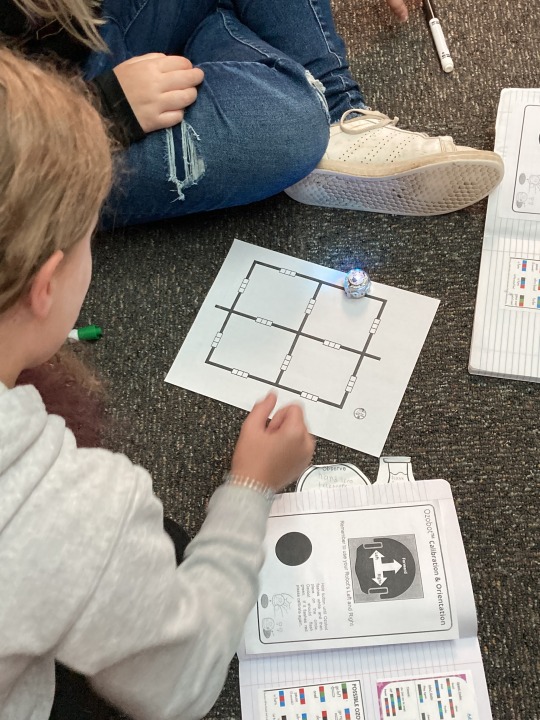
Hands-On Marvels - Forget textbooks! 5th graders are scientists in action! Instructional design turns the classroom into a lab, bringing theories to life through hands-on activities.
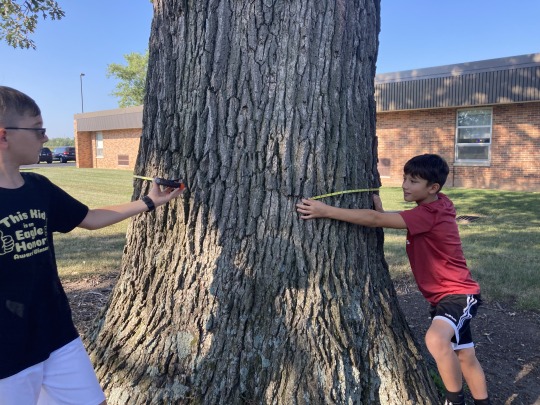
Curiosity Unleashed - Questions guide the journey. Instructional design fosters a culture of inquiry, turning students into investigators.
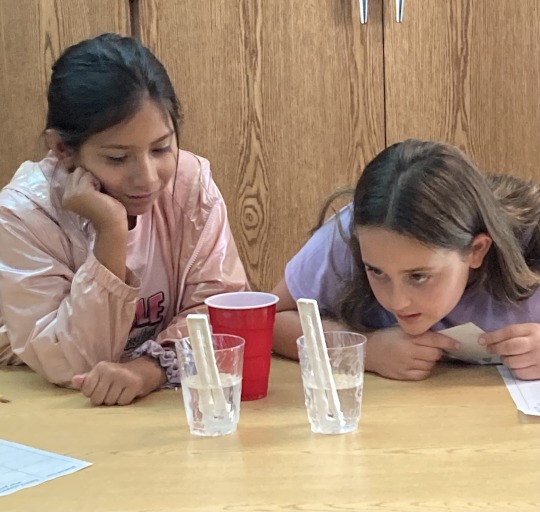
Tailored Learning - Recognizing diverse learning styles, instructional design customizes lessons. Visuals for visuals learners, hands-on for kinesthetic learners - everyone finds their pathway to understanding.
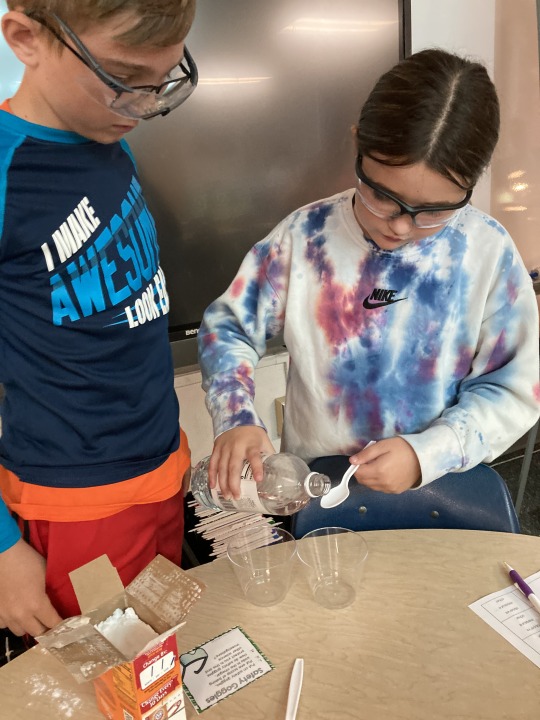
Teamwork thrives - Collaboration is key! Group projects and shared discoveries create a community where knowledge isn't just gained; it's shared, discussed, and celebrated together.
4 notes
·
View notes
Text

A Return, Anew: Into Nurturing
Greetings World!
I'm dusting off this old Tumblr after nearly 7 years to start a new project. And the timing feels meaningful - in Judaism, 7 is considered the number of spiritual fullness and completeness.
So here we are, in 2024 - 7 years after I last posted here regularly. It feels like the right time to pursue new depths of self-knowledge and balance. I want to understand how the different pieces of my life puzzle fit together; where my energy flows and where it's blocked.
Each year, I choose a new quote to guide me for the year to come - for 2024, I chose a quote from Buddhist-Vietnamese monk and one of my teachers, Thich Nhat Hanh, to carry me forward:
"Walk as if you are kissing the Earth with your feet."
I look to 2024 as a chance to sink deeper roots into this beautiful, blossoming life I’m building for myself. Thich Nhat Hanh's words will remind me to walk steadily yet lightly upon this precious Earth, embracing each breath as a gift. There is much more love to cultivate, still and despite.
In this coming year, I aim to be more rooted, intentional, and connected - to my new home in Philadelphia, its land and community, my body and spirit, my creative work, my relationships. After so much movement and flux these past few years, my goal for 2024 is to sink in deeply and mindfully, and pour my energy into what serves my raison d’être.
I'm divvying up my time and energy amongst different categories of creative pursuits and personal development goals:
Producing/performing theater and clown
Writing essays, poetry, and fiction
Navigating my day job in instructional design
Opportunities for teaching (clown, Jewish studies, yoga)
Travel and adventure
Building community and relationships in my new home
Nurturing my health and wellbeing
In times past, I have felt energized and focused by what I brought into my life; other times, I felt drained and overwhelmed by it all.
So this year, I'm going to document it - how I spend each week across these different areas. What activities feed me, versus take from me? When do I give too much and have nothing left for myself?
I'm reminded of a teaching from yoga philosophy around sthira and sukha - finding equilibrium between strength and comfort, effort and ease. I want to find that sweet spot, where I can walk the line between sthira and sukha in how I pace myself across all these different pursuits. Grounding down into steady effort when needed, while also cultivating softness and spaciousness.
So, once a week, I'll tally up the previous 7 days - what projects got my time and energy, what didn't, how balanced did I feel, what do I need more or less of, etc.
I'm hopeful this reflection will help me find alignment, purpose, and sustainability across the many beautiful puzzle pieces of my life.
As the Jewish tradition says, 7 is the number sitting at the center of it all, binding together the physical and spiritual worlds.
So, let the journey begin...
#nurture project#sthira#sukha#seven#kabbalah#judaism#yoga#clown#writing#poetry#essays#physical theater#fiction#instructional design#travel#adventure#teaching#community#relationships#intentional year#2024 planning#health#well being
3 notes
·
View notes
Text
Are educational games effective? How I use Games as Instructional Content
This post aims to spark conversation and inspire further exploration into the effective integration of games in educational contexts. Twitter Patreon GitHub LinkedIn YouTube In the vast landscape of education, the effectiveness of games as instructional content remains a subject of vibrant discussion and exploration. The question isn’t just whether educational games are effective, but how…
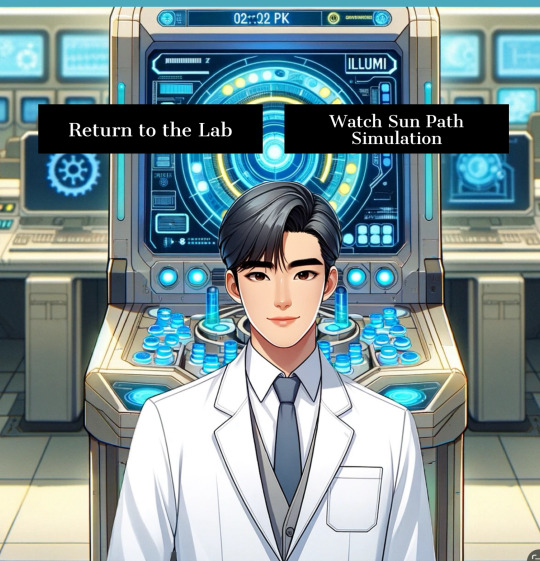
View On WordPress
#apc#choose your own adventure#ed tech#education#education technology#educational game#English teacher#game design#game design courses#games for learning#if#instructional design#interactive fiction#Jane mcgonigal#Jesse schell#Kansas City#Karl kapp#KCMO#learning game#narrative design#poet poetry#poets#point and click#raph koster#serious games#simulations#storyteller#storytelling#teachin*online#teaching English
2 notes
·
View notes
Text
This article from Inside Higher Ed has Four directions for assessment redesign in the age of generative AI
From written description to multimodal explanation and application
From literature review alone to referencing lectures
From presentation of ideas to defense of views
From working alone to student-staff partnership
4 notes
·
View notes
Text
Instructional Technology and Design Philosophy
I have always had a fascination, love, and passion for education. My experiences growing up were not the typical childhood education experiences. I grew up on a small island off the coast of North Carolina where I could often be found playing on the beach, in the woods, or by the sound. Our educational experiences on the island included marine biology and other non-traditional education experiences. This is what helped develop my love for the environment, environmental education, museums, and museum education. The island was home to both a lifesaving station museum and lighthouse museum. Many of my childhood school field trips were to these museums where I developed a love for learning through museum education. Museum and environmental passions have been woven throughout the rest of my life in various ways whether living on a military base visiting various base museums or enjoying nature programs at various museums. It wasn’t until my internship with Wyoming Wildlife Advocates and AmeriCorps in 2020 that I realized I wanted to become an instructional designer for a museum or with a school in regards to environmental education. Because we were in the middle of COVID-19 pandemic, this was a virtual internship. During this virtual internship, I helped to develop school age programs, both in person and virtual, regarding wildlife education and loved every minute of it. This is when I realized I wanted to pursue a career within the ITD field.
Instructional Design. Mercadai (2021) states that instructional design involves the practice of establishing the goals within instruction and what each learner requires, then being able to develop the groundwork and bridge between the two. Technology is a way to create a bridge between the two. The purpose of using instructional technology in museum education and schools is to enable students to learn and understand concepts with a variety of tools. Using technology within a museum education or school setting allows learners an opportunity that normally would not present itself in the traditional setting. I believe that instructional technology creates an avenue of multiple learning experiences which can help foster a level of learning that just using a traditional lecture style may not. I believe this is important. In the early 1900s, roots of instructional technology and design began with school museums followed by the use of educational television in the mid 1900’s. During the 1980’s, many students were exposed to computers in schools. 1991 changed the instructional design and technology field by the development of the world wide web (An, 2021). By the 2000’s social media had become a part of the instructional design and technology and educational history (An, 2021). One can see that the instructional design and technology field has been through vast amounts of change through the years. How do we as instructional and technology designers keep up with that change though and ensure the field continues to grow?
Philosophy. One of the ways I can ensure the ITD field continues to grow is through my own philosophy. By having a solid personal philosophy on instructional design and technology, this will help educate others in a positive and well-rounded manner. I believe each learner has the right to an inclusive, non-traditional, highly motivated learning experience that will expand their knowledge and form a basis for further questioning and want to seek more. My philosophy is based on a combination of theories including Howard Gardner’s multiple intelligence theory, John Dewey’s theory of participatory experience, and Vygotsky’s proximal development and scaffolding theories (Porcello, 2017). Gardner’s multiple intelligence theory states that “human beings have different ways in which they process data, each being independent” (Slidemodel, 2021). I believe Gardner’s theory of multiple of intelligence can be used within educational technology to have learners figure out what they are best at within that lesson and encourage their creativity. John Dewey’s theory of participatory experience states that “ education is learner based. Learning through experience is important” (Porcello, 2017). Porcello (2017) stated that “visitors want more engaging activities” within museum education. I believe educational technology is the perfect way to create this experience both at the museum and virtually, or within a classroom at a school. Vygotsky’s theory of proximal development and scaffolding states that “learning is social” and “students learn more through individuals who are more informed” (Porcello, 2017). Educational technology can help me build products and service, whether within a museum education or classroom setting, which can collaborative and foundationally fundamental allowing for growth.
My own personal philosophy also aligns with Moore’s (1989) Theory of Interaction. I believe educational technology allows for a more non-traditional approach to education, whether in museums or schools. By allowing people to learn not only through the content being created and through an instructor, but also by allowing the learners collaboration with each other, this will increase the learning experience. Bates (2015) SECTION model has now become a guide in assisting in the selection of educational technology tools. I now recognize that my own time is a valuable asset in the educational technology selection process.
By having a solid personal inclusive philosophy within educational technology and instructional design, this will help enhance the instructional design and technology field.
Reference:
An, Y. (2021). A history of instructional media, instructional design, and theories. International Journal of Technology in Education (IJTE), 4(1), 1-21. https://doi.org/10.46328/ijte.35
Mercadai, T. (2021). Instructional Design. Salem Press Encyclopedia.
Moore, Michael. (1989).Three Types of Interaction. American Journal of Distance Education. 3. 1-7. 10.1080/08923648909526659.
Porcello, J. (2017). Education Theories in Museums. https://sites.google.com/site/educationtheoriesinmuseums/
Slidemodel. (2021). Gardner’s Theory of Multiple Intelligences: 8 types of intelligences. https://slidemodel.com/gardners-theory-8-multiple-intelligences/
2 notes
·
View notes
Text
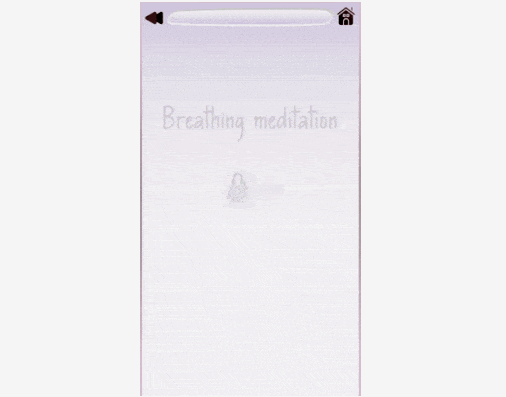
GUIDED PRACTICE: MINDFUL BREATHING
Going mobile with a short vertical app-like e-learning course about mindful breathing: first how to, then a guided breathing practice.
Designed on Illustrator, animated on Storyline. Breathing gif by Aline Moraes on Lottie Files.
6 notes
·
View notes
Text
What is Constructivism?
Photo by Annie Spratt Constructivism is a theory of learning and knowledge that posits that individuals construct their understanding and knowledge of the world through experiences and reflecting on those experiences. This theory has profound implications in various fields, including education, psychology, and epistemology. Let’s delve into the key aspects of constructivism, its historical…
#Constructivism in Education#Constructivist Approach#Constructivist Assessment#Constructivist Classroom#Constructivist Curriculum#Constructivist Learning Activities#Constructivist Learning Benefits#Constructivist Learning Challenges#Constructivist Learning Environment#Constructivist Learning Model#Constructivist Learning Outcomes#Constructivist Learning Principles#Constructivist Learning Resources#Constructivist Learning Techniques#Constructivist Learning Theory#Constructivist Pedagogy#Constructivist Philosophy#Constructivist Strategies#Constructivist Teaching Methods#Constructivist Theory Examples#Instructional Design#Instructional Design Models
0 notes
Text
Motivational Strategies for Engaging and Effective Microlearning

Microlearning is an educational strategy that delivers content in small, specific bursts, typically designed to be consumed quickly. This approach caters to the fast-paced lifestyles and short attention spans prevalent in today's society. However, the challenge remains: how do you keep learners engaged and motivated in these brief learning sessions? The answer lies in leveraging motivational concepts to inspire and enhance microlearning assets. Here’s how you can do it:
Understanding Motivation in Learning
Before diving into the specifics of how to use motivational concepts in microlearning, it’s important to understand what motivation is and why it matters. Motivation can be broadly categorized into two types: intrinsic and extrinsic.
Intrinsic Motivation: This comes from within the learner. It is driven by an interest or enjoyment in the task itself. When learners are intrinsically motivated, they engage in learning for the pure pleasure and satisfaction derived from the activity.
Extrinsic Motivation: This comes from external factors. It is driven by rewards such as grades, money, or recognition. Extrinsically motivated learners engage in an activity to earn a reward or avoid punishment.
Effective microlearning should aim to tap into both types of motivation to keep learners engaged.
Strategies to Incorporate Motivational Concepts in Microlearning
Set Clear and Achievable Goals
Setting clear, specific, and achievable goals is a key motivational strategy. In microlearning, each module should have a well-defined objective that is communicated to the learner at the outset. This helps learners understand what they are expected to achieve and provides a sense of direction.
For example, instead of a generic module title like "Introduction to Project Management," use a specific goal-oriented title like "Understanding the Basics of Project Management in 5 Minutes."
Use Gamification
Gamification involves incorporating game elements into non-game contexts. This can be an incredibly effective way to boost engagement and motivation in microlearning. Elements such as points, badges, leaderboards, and progress bars can make learning more interactive and fun.
For instance, a microlearning module on customer service can include a scenario-based game where learners earn points for choosing the correct responses in various customer interaction scenarios.
Leverage Social Learning
Humans are inherently social creatures, and social interactions can significantly enhance motivation. Incorporating social learning elements such as discussion forums, peer reviews, and collaborative projects into microlearning can foster a sense of community and support.
Creating microlearning assets that encourage learners to share their achievements or discuss topics with peers can boost engagement. For example, after completing a microlearning module, learners could be prompted to share their key takeaways on a social platform or within a learning management system (LMS) community.
Provide Immediate Feedback
Immediate feedback is crucial for motivation. It helps learners understand what they did right or wrong and how they can improve. In microlearning, this can be achieved through quizzes, interactive exercises, and instant feedback mechanisms.
For example, after completing a short quiz at the end of a microlearning module, learners can receive instant feedback that not only shows the correct answers but also provides explanations and additional resources for further learning.
Utilize Storytelling
Storytelling is a powerful tool to enhance motivation and retention. Stories can make learning more relatable and memorable by connecting the content to real-life experiences.
Microlearning modules can incorporate short, impactful stories that illustrate key concepts. For instance, a microlearning asset on leadership skills could start with a brief story about a well-known leader overcoming a significant challenge, thus making the learning experience more engaging and meaningful.
Personalize the Learning Experience
Personalization can significantly boost intrinsic motivation by making learners feel valued and understood. Microlearning assets can be personalized based on the learner’s preferences, needs, and progress.
This could involve adapting the content based on the learner’s prior knowledge, providing different pathways through the material based on their interests, or offering personalized recommendations for further learning.
Ensure Content Relevance and Practicality
Learners are more motivated when they see the relevance and practical application of what they are learning. Microlearning content should be directly applicable to the learner’s job or personal life and provide practical tips and tools that they can use immediately.
For example, a microlearning module for sales professionals could include practical techniques for closing deals, supported by real-world examples and scenarios that they are likely to encounter in their work.
Incorporate Visual and Interactive Elements
Visual and interactive elements can make microlearning more engaging and enjoyable. This includes videos, infographics, interactive simulations, and other multimedia elements that cater to different learning styles and keep the content fresh and interesting.
For example, instead of a text-heavy module on cybersecurity, use a mix of animated videos, interactive quizzes, and infographics to convey the information more effectively and engagingly.
Build a Progression System
A sense of progression can be highly motivating. Microlearning assets should be designed in a way that allows learners to track their progress and see how far they’ve come. This can be achieved through a series of interconnected modules that gradually build on each other, offering a clear path to mastery.
For instance, a microlearning series on digital marketing could start with the basics and progressively cover more advanced topics, with each module building on the previous one and helping learners see their journey from novice to expert.
Encourage Reflection and Application
Encouraging learners to reflect on what they’ve learned and how they can apply it in real life can enhance motivation and retention. Microlearning modules can include reflective questions, practical exercises, and prompts for learners to think about how they will use the new knowledge or skills in their daily lives.
For example, after a microlearning module on time management, learners could be asked to write down three specific changes they plan to make in their routine and how they expect these changes to improve their productivity.
Conclusion
Incorporating motivational concepts into microlearning is not just about making the content more engaging; it’s about creating an environment that fosters a deep, lasting desire to learn. By setting clear goals, using gamification, leveraging social learning, providing immediate feedback, utilizing storytelling, personalizing the experience, ensuring content relevance, incorporating visual and interactive elements, building a progression system, and encouraging reflection and application, educators and instructional designers can inspire learners and make microlearning a powerful and effective educational tool.
In today’s fast-paced world, where attention spans are short and time is limited, microlearning, infused with motivational strategies, offers a compelling solution to keep learners engaged and motivated. By understanding and applying these concepts, you can create microlearning assets that not only educate but also inspire and motivate learners to achieve their fullest potential.
#Microlearning#Motivation#Intrinsic Motivation#Extrinsic Motivation#Gamification#Social Learning#Immediate Feedback#Storytelling#Personalized Learning#Content Relevance#Visual Elements#Interactive Learning#Progression System#Reflection#Practical Application#Engagement#Educational Strategies#Learner Motivation#Instructional Design#Learning Objectives
2 notes
·
View notes
Text
What is "outreach"? Why do we do it?
Homelessness advocacy begins with getting to know our neighbors. Each week, we distribute food, water, and hygiene supplies to our unhoused neighbors. Providing this basic material assistance helps us to build relationships with people living on the streets, and create community. This is the goal of outreach.
Animated video explainer for Ktown For All, 2024. Created by Meredith Alden Lewis in Vyond. You can also watch on YouTube.
0 notes
Text

Instructional design is the systematic process of creating educational experiences to enhance learning and improve performance outcomes.
Read our blog:- Infonative/blogs
#e learning#learning management system#instructional design#e lectronic learning#mobile learning#gamification#career#business growth
0 notes
Text
Writing As Therapy, Sure, But Gaming as a “Self-Care” Ritual? Here’s Why
A Case for Games as Over-The-Counter Wellness Tools Just like a daily multivitamin or a cup of tea, games have become a form of self-care for many individuals. In a fast-paced world filled with stress and anxiety, taking a break and indulging in a game can have a profound impact on one’s mental and emotional well-being. Studies have shown that playing games can improve mood, reduce stress, and…
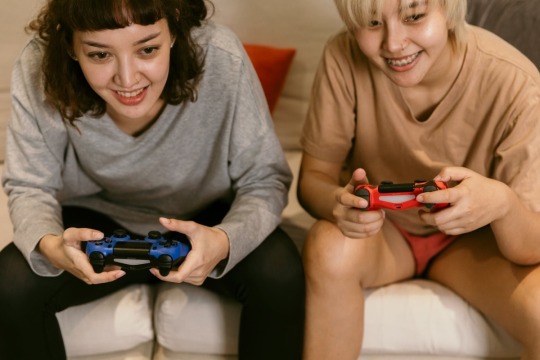
View On WordPress
#anxiety#community#critical theory#critical thinking#depression#digital community#dramaturge#education#game studies#gamebased learning#gamer#gamers#GBL#human psychology#instructional design#loneliness#meditation#mental health#mmorpg#multiplayer#narrative design#neurodiversity#psychology#ptsd#storyteller#teaching#trauma#ui#user experience#user interface
3 notes
·
View notes
Text
Putting this out into the ether-
Is there anyone with Adobe Captivate who would be willing to evaluate several prototypes of mini-tutorials on the subject? Very low commitment.
0 notes
Text

INTERACTIVE TABLE OF CONTENTS: THE CREATIVE PROCESS
An interactive five-step table of contents, engaging the learner's attention through active discovery (drag-and-drop, dial knob, puzzle...)
Design from Freepik, animated on Storyline.
Static screens:





0 notes